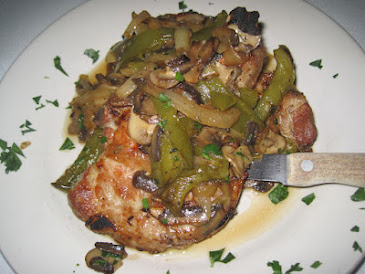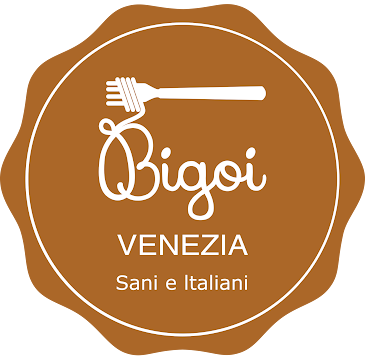SOTHEBY’S TO OFFER THE WORLD’S MOST FAMOUS STAMP The Legendary and Unique British Guiana One-Cent Magenta Is Estimated to Sell for $10/20 Million TO BE OFFERED IN A DEDICATED EVENING SALE IN NEW YORK ON 17 JUNE 2014 Our Coverage Sponsored by Cosmopolitan Dental, Official Dentist of Whom You Know
The Best Dentist in Manhattan
&
Official Dentist of Whom You Know:
Cosmopolitan Dental
30 E. 40th Suite 1001
212 683 1960
***
Sotheby’s New York will offer the most famous stamp in the world in a dedicated auction on 17 June 2014. No stamp is rarer than the sole-surviving example of the British Guiana One-Cent Magenta, a unique yet unassuming penny issue from 1856, and no stamp is more valuable: each of the three times it has been sold at auction, it has established a new record price for a single stamp. The British Guiana is equally notable for its legacy, having been rediscovered by a 12-year-old Scottish boy living in South America in 1873, and from there passing through some of the most important stamp collections ever assembled. The stamp comes to auction this spring with a pre-sale estimate of $10/20 million*, which would mark a new world auction record for a stamp**.
The British Guiana has not been on view publicly since the 1986, when it was exhibited at Ameripex ’86 International Stamp Show in Chicago. The stamp will travel this spring to locations including London and Hong Kong, before returning to New York for exhibition in Sotheby’s York Avenue galleries beginning 14 June.
The British Guiana is on offer from the estate of John du Pont – its most recent purchaser, in 1980 – and a portion of proceeds from the sale will benefit the Eurasian Pacific Wildlife Conservation Foundation, which du Pont championed during his lifetime.
David Redden, Director of Special Projects and Worldwide Chairman of Sotheby’s Books Department, commented: “I have been with Sotheby’s all my working life, but before I knew about the world’s greatest works of art, before I knew about the Mona Lisa or Chartres Cathedral I knew about the British Guiana. For me, as a schoolboy stamp collector, it was a magical object, the very definition of rarity and value, unobtainable rarity and extraordinary value. That schoolboy of long ago would be bemused and astonished to think that he would one day, years later, be temporary guardian of such a world treasure.”
THE BRITISH GUIANA ONE-CENT MAGENTA
In 1852, British Guiana began receiving regular postage stamps manufactured in England by Waterlow & Sons. But in 1856, a shipment of stamps was delayed, which threatened a disruption of postal service throughout British Guiana. The postmaster turned to the printers of the local Royal Gazette newspaper, and commissioned a contingency supply of postage stamps: the one-cent magenta, a four-cent magenta, and a four-cent blue.
The sole-surviving example of the one-cent magenta was first rediscovered not far from where it was initially purchased. In 1873, L. Vernon Vaughan, a 12-year-old Scottish schoolboy living with his family in British Guiana, found the stamp among a group of family papers bearing many British Guiana issues. A budding ‘philatelist’ (stamp collector), Vaughan could not have known the one-cent was unique, but he did know that he did not have an example, and added it to his album. He would later sell the stamp to another local collector in British Guiana, for several shillings.
The British Guiana One-Cent entered the UK in 1878, and shortly after, it was purchased by Count Philippe la Renotière von Ferrary, perhaps the greatest stamp collector in history. France seized his collection, which had been donated to the Postmuseum in Berlin, as part of the war reparations due from Germany, and sold the stamp in 1922 as one of a series of celebrated auctions from 1920–25. It was bought by Arthur Hind, a textile magnate from New York, for its first auction-record price of $35,000, followed by: Australian engineer Frederick T. Small; then a consortium headed by Irwin Weinberg; and lastly by John du Pont, heir to the eponymous chemical company fortune, eccentric amateur sportsman, and avid collector. Du Pont paid $935,000 for the stamp in a 1980 auction, marking the object’s most recent record-setting price.
HISTORY OF OWNERSHIP
1873
L. VERNON VAUGHAN, BRITISH GUIANA
• Discovered by the Scottish schoolboy living in South America, among family papers
1873
NEIL R. MCKINNON, BRITISH GUIANA
• Purchased from Vaughan
• Sent to Glasgow, Scotland for inspection
1878
THOMAS RIDPATH, LIVERPOOL, ENGLAND
• Purchased from McKinnon
• Recognized the stamp’s rarity
1878
PHILIPPE LA RENOTIÈRE VON FERRARY, FRANCE
• Purchased from Ridpath
• Austrian nobleman and owner of the world’s most famous stamp collection,
who moved to Switzerland at outbreak of World War I
• Bequeathed his collection to Postmuseum in Berlin at his death
• Ferrary Collection seized by France as war reparations and sold in a
celebrated series of 14 auctions from 1920 to 1925,
including the British Guiana in 1922
1922
ARTHUR HIND, UTICA, NEW YORK
• Purchased at the auction by dealer Hugo Griebert on behalf of Hind
Set then-record auction price of $35,000
1933
WIDOW OF ARTHUR HIND, NEW YORK
• Hind's will directed that his collection should be sold for the benefit of his estate.
His widow successfully contested this, saying Hind had given her the stamp in his lifetime.
• Hind’s widow continued to exhibit and display the stamp
• Sold to Frederick T. Small by Finbar Kenny,
Manager of the stamp department of R.H. Macy of New York,
after the 1940 World’s Fair exhibition
1940
FREDERICK T. SMALL, FLORIDA
• Australian living in Florida
• Consigned for auction with Robert Siegel of New York, 1970
1970
IRWIN WEINBERG STAMP CONSORTIUM
• Irwin Weinberg led a consortium of buyers at the auction
Set then-record auction price of $280,000
• Consigned to auction in 1980
1980
JOHN E. DU PONT, PENNSYLVANIA
Purchased at auction for then-record price of $935,000
** The current auction record for a single stamp is CHF 2,8750,000 (approximately US$2.2 million), set by the Treskilling Yellow in 1996.
The current auction record for any philatelic item is CHF 6,123,750 (approximately US$4 million), set by The Bordeaux Cover in 1993 – the cover including both of the Mauritius “Post Office” stamps.
The current auction record for a block (plate or otherwise) is $2,970,000, set by theInverted Jenny plate block in 2005 – the block comprising four individual stamps.
FOR MORE NEWS FROM SOTHEBY’S
Follow: www.twitter.com/sothebys
Watch: www.youtube.com/sothebys
Sotheby’s has been uniting collectors with world-class works of art since 1744. Sotheby’s became the first international auction house when it expanded from London to New York (1955), the first to conduct sales in Hong Kong (1973) andFrance (2001), and the first international fine art auction house in China (2012). Today, Sotheby’s presents auctions in nine different salesrooms, including New York,London, Hong Kong and Paris, and Sotheby’s BidNow program allows visitors to view all auctions live online and place bids in real-time from anywhere in the world. Sotheby’s offers collectors the resources of Sotheby’s Financial Services, the world’s only full-service art financing company, as well as private sale opportunities in more than 70 categories, including S|2, the gallery arm of Sotheby’s Contemporary Art department, as well as Sotheby’s Diamonds and Sotheby’s Wine. Sotheby’s has aglobal network of 90 offices in 40 countries and is the oldest company listed on the New York Stock Exchange (BID).
*Estimates do not include buyer’s premium and prices achieved include the hammer price plus buyer’s premium.































































































